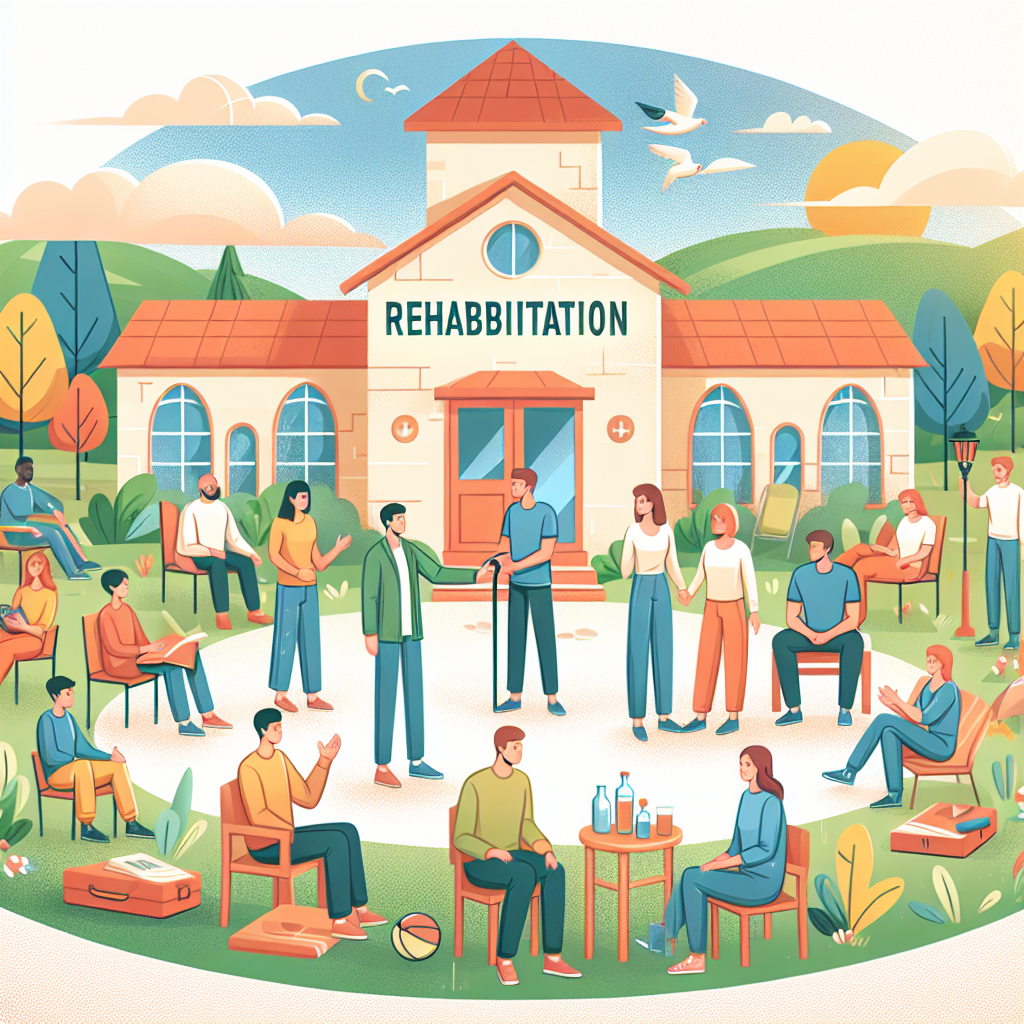-
Table of Contents

“Empowering Teens: Tailored Rehab Programs for Every Path to Recovery”
Introduction
Rehabilitation programs for teen drug addicts are designed to address the unique needs of adolescents struggling with substance abuse. These programs vary widely in their approaches, settings, and intensity, offering a range of options to cater to different levels of addiction and personal circumstances. The primary types of rehab programs for teens include inpatient rehab, outpatient rehab, residential treatment centers, therapeutic boarding schools, and wilderness therapy programs. Each type of program provides a structured environment where teens can receive medical care, counseling, and support to overcome addiction and develop healthier coping mechanisms. Understanding the different types of rehab programs available can help families and healthcare providers choose the most appropriate and effective treatment for a teen’s specific situation.
Understanding Inpatient Rehab Programs for Teen Drug Addicts
Inpatient rehab programs for teen drug addicts offer a structured and supportive environment designed to help young individuals overcome substance abuse and reclaim their lives. These programs are often considered the most intensive form of treatment, providing 24-hour care and a comprehensive approach to recovery. Understanding the various components and benefits of inpatient rehab can illuminate why this option is often recommended for teens struggling with addiction.
One of the primary advantages of inpatient rehab programs is the removal of the teen from their usual environment, which may be filled with triggers and negative influences. By placing them in a controlled setting, the likelihood of relapse is significantly reduced. This separation allows teens to focus entirely on their recovery without the distractions and temptations that might be present in their everyday lives. Moreover, the structured nature of inpatient programs ensures that teens adhere to a daily routine, which can be crucial in establishing new, healthy habits.
In addition to the structured environment, inpatient rehab programs offer a variety of therapeutic interventions tailored to the unique needs of teenagers. These interventions often include individual therapy, group therapy, and family therapy. Individual therapy provides a safe space for teens to explore the underlying issues contributing to their addiction, such as trauma, mental health disorders, or low self-esteem. Through one-on-one sessions with a trained therapist, teens can develop coping strategies and gain a deeper understanding of their behaviors.
Group therapy, on the other hand, allows teens to connect with peers who are facing similar challenges. This sense of community can be incredibly empowering, as it helps teens realize they are not alone in their struggles. Sharing experiences and offering mutual support can foster a sense of belonging and reduce feelings of isolation. Additionally, group therapy sessions often incorporate activities that promote teamwork and communication skills, further aiding in the recovery process.
Family therapy is another critical component of inpatient rehab programs. Addiction does not only affect the individual but also has a profound impact on their loved ones. Family therapy sessions aim to address these dynamics, helping to rebuild trust and improve communication within the family unit. By involving family members in the recovery process, teens can receive the support they need from those closest to them, which can be instrumental in maintaining long-term sobriety.
Furthermore, inpatient rehab programs often include educational components that teach teens about the science of addiction and the importance of maintaining a healthy lifestyle. These educational sessions can empower teens with knowledge, helping them make informed decisions about their health and well-being. Life skills training is also commonly incorporated, equipping teens with practical tools for managing stress, building healthy relationships, and setting goals for the future.
The holistic approach of inpatient rehab programs extends beyond traditional therapy and education. Many programs offer recreational activities, such as sports, art, and music therapy, which can provide a creative outlet for teens to express themselves and discover new passions. These activities not only enhance the overall treatment experience but also promote physical and emotional well-being.
In conclusion, inpatient rehab programs for teen drug addicts provide a comprehensive and supportive environment that addresses the multifaceted nature of addiction. By offering a combination of therapeutic interventions, educational components, and recreational activities, these programs aim to equip teens with the tools they need to achieve lasting recovery. The structured and immersive nature of inpatient rehab can be a transformative experience, helping teens break free from the cycle of addiction and embark on a path toward a healthier, more fulfilling life.
The Benefits of Outpatient Rehab Programs for Teen Drug Addicts
Outpatient rehab programs offer a unique and effective approach to helping teen drug addicts reclaim their lives. Unlike inpatient programs, which require individuals to reside at a treatment facility, outpatient programs allow teens to continue living at home while receiving the support and care they need. This flexibility can be particularly beneficial for adolescents, as it enables them to maintain their daily routines, including attending school and participating in family activities. By integrating treatment into their everyday lives, teens can develop the skills and resilience necessary to overcome addiction in a real-world context.
One of the primary benefits of outpatient rehab programs is the ability to provide personalized care tailored to the specific needs of each teen. These programs often include a combination of individual therapy, group counseling, and family therapy, ensuring that all aspects of the teen’s life are addressed. Individual therapy sessions allow teens to explore the underlying causes of their addiction, such as trauma, mental health issues, or peer pressure, in a safe and supportive environment. Through group counseling, teens can connect with others who are facing similar challenges, fostering a sense of community and shared understanding. Family therapy, on the other hand, helps to repair and strengthen relationships, creating a solid support system that is crucial for long-term recovery.
Moreover, outpatient rehab programs emphasize the importance of education and skill-building. Teens are taught essential coping mechanisms and life skills that can help them navigate the pressures and temptations they may encounter in their daily lives. These programs often incorporate educational components that focus on the dangers of drug use, the science of addiction, and strategies for maintaining sobriety. By equipping teens with this knowledge, outpatient programs empower them to make informed decisions and take control of their recovery journey.
Another significant advantage of outpatient rehab programs is their accessibility. These programs are typically more affordable than inpatient options, making them a viable choice for families with limited financial resources. Additionally, the flexible scheduling of outpatient programs allows teens to receive treatment without disrupting their academic or extracurricular commitments. This continuity can be crucial for maintaining a sense of normalcy and stability during the recovery process.
Furthermore, outpatient rehab programs often provide ongoing support even after the initial treatment phase has concluded. Many programs offer aftercare services, such as continued therapy sessions, support groups, and relapse prevention planning. This ongoing support is vital for helping teens stay on track and avoid falling back into old habits. By maintaining a connection to the treatment community, teens can continue to receive guidance and encouragement as they navigate the challenges of early recovery.
In conclusion, outpatient rehab programs offer a comprehensive and flexible approach to treating teen drug addiction. By allowing teens to remain in their home environment, these programs provide a unique opportunity for adolescents to integrate recovery into their daily lives. The personalized care, emphasis on education and skill-building, accessibility, and ongoing support make outpatient rehab programs an effective and inspiring option for teens seeking to overcome addiction. With the right support and resources, teen drug addicts can reclaim their lives and build a brighter, healthier future.
Q&A
1. What are the different types of rehab programs available for teen drug addicts?
– The different types of rehab programs for teen drug addicts include inpatient rehabilitation, outpatient rehabilitation, therapeutic boarding schools, wilderness therapy programs, and intensive outpatient programs (IOPs).
2. How does inpatient rehabilitation differ from outpatient rehabilitation for teen drug addicts?
– Inpatient rehabilitation requires teens to live at the treatment facility for a specified period, providing a structured environment with 24/7 supervision and support. Outpatient rehabilitation allows teens to live at home while attending scheduled treatment sessions, offering more flexibility but requiring a higher level of self-discipline and support from family.
Conclusion
In conclusion, the different types of rehab programs for teen drug addicts, including inpatient, outpatient, therapeutic communities, and wilderness therapy, offer varied approaches to treatment based on the severity of addiction and individual needs. Inpatient programs provide intensive, structured environments, while outpatient programs offer flexibility for those with milder addictions. Therapeutic communities focus on long-term recovery through peer support, and wilderness therapy combines outdoor activities with counseling to build resilience and self-esteem. Each type of program has its unique benefits, and the choice should be tailored to the specific circumstances and needs of the teen to ensure the best possible outcome for recovery.



